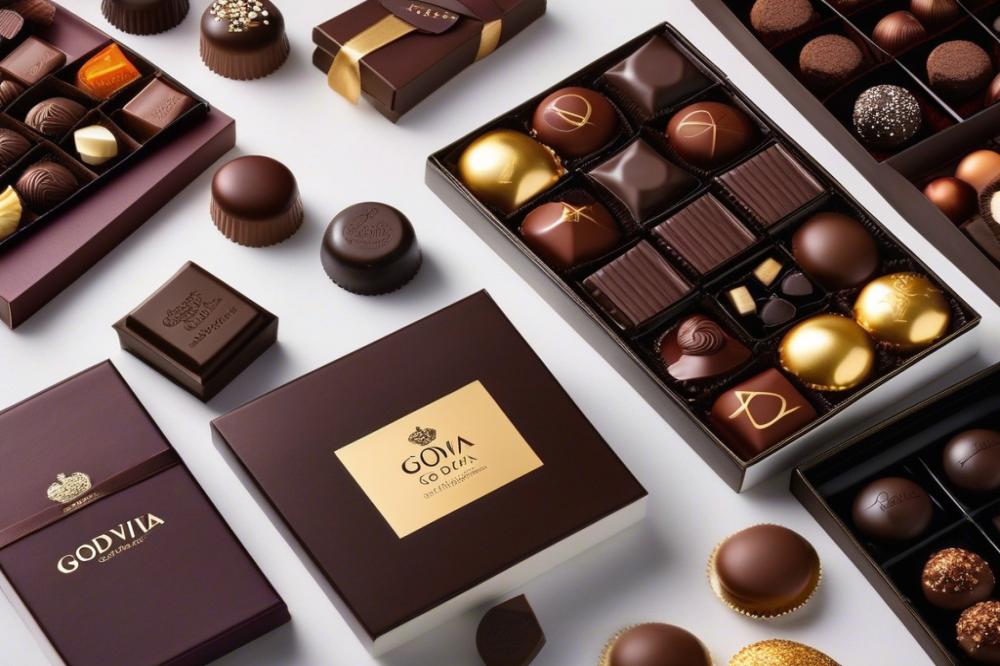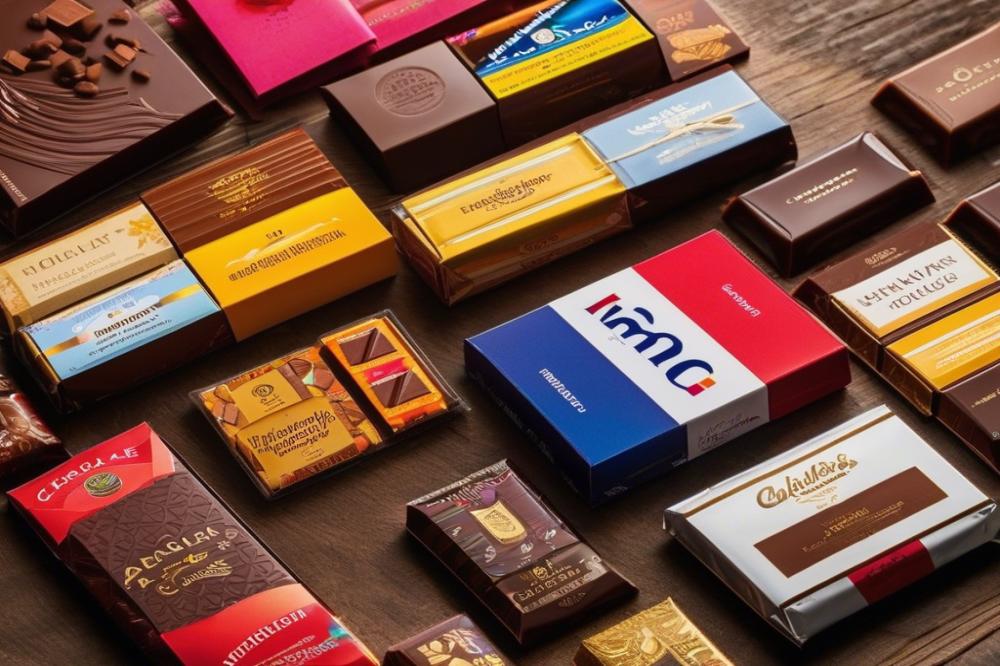Understanding the Great Debate
The world of snacks can often be a simple delight, but not when it comes to Jaffa cakes. This popular treat has sparked a long-standing debate over its true identity. Are they a biscuit or a cake? The intricacies of their classification have puzzled fans and food experts alike.
Jaffa Cakes enjoy immense popularity across the UK, often found in lunchboxes or shared during tea time. Many consider them a beloved dessert, while others view them more as a confectionery snack. Their history adds to the fascination, with their combination of chocolate, sponge, and a bright orange fruit filling. This mix makes them not just tasty but also memorable in the snack scene.
Legal classification further complicates the matter. In a notable case, a tax dispute in the 1990s led to a court ruling stating that they are cakes, not biscuits. This decision has not settled opinions among enthusiasts, however. Discussions about the food’s true nature continue, capturing the interest of many.
Cakes typically rise and remain soft, while biscuits are often crisp and crumbly. The texture of the Jaffa Cakes matches more with the characteristics of a cake. Yet, they are usually consumed like biscuits, adding fuel to the ongoing food debate. Regardless of how one classifies them, there’s no denying their place among famous chocolate snacks in the UK.
The Origins of Jaffa Cakes

In the 1920s, McVitie’s, a well-known British company, introduced a new treat to the UK market. This snack was inspired by the Jaffa orange, a fruit famous for its sweetness and vibrant flavor. The combination of a sponge base, orange jam, and a chocolate topping created a unique dessert experience. Initially, these treats were marketed as a luxurious confectionery item, appealing to those with a taste for indulgence.
The creation of these snacks coincided with a growing interest in more refined desserts. McVitie’s aimed to capture the love of chocolate while keeping the cake at the heart of the treat. The mix of textures—from the soft sponge to the gooey center and crisp chocolate—made them stand out among other UK sweets. They soon grew in popularity, becoming a staple in homes across Britain.
Difficulties arose in defining what exactly these treats were. Were they a biscuit or a cake? This food debate continues to evoke strong opinions. In a landmark case, the legal classification was put to the test. In 1991, a tribunal determined that Jaffa Cakes should be classified as cakes. This ruling was crucial for tax reasons, as cakes are exempt from certain VAT regulations unlike biscuits. Such discussions surrounding the product add a layer of complexity to its history.
Despite the debates, Jaffa Cakes represent more than just a food item. They symbolize a shift in dessert culture during their inception. Today, they remain a beloved snack and a topic of conversation among fans. The journey from a small idea inspired by a fruit to a household name reflects larger trends in food marketing and consumer preferences over the decades.
The Composition of Jaffa Cakes

Jaffa Cakes feature a distinctive blend of ingredients that spark much debate in the food world. A sponge cake base is the foundation upon which these treats stand. This soft, light layer gives them a fluffy texture that is often associated with cakes rather than biscuits.
On top of the sponge, a layer of fruit jelly adds a fruity punch. This jelly is typically orange-flavored and brings a burst of sweetness that tantalizes the taste buds. This filling not only enhances the flavor profile but also adds an element of moisture, making them enjoyable to consume.
Finally, a smooth chocolate coating envelops everything. This rich layer nudges the entire treat towards the realm of dessert, due to its indulgent nature. When one bites into a Jaffa Cake, the combination of the soft sponge, flavorful jelly, and velvety chocolate creates a sensory experience that can feel quite luxurious.
Classifying these snacks can be tricky. The legal classification in the UK has even seen challenges due to their unique structure. Traditionally, cakes are considered a dessert, while biscuits fall into the category of snacks. The debate often centers around their texture. Cakes are soft and spongy, while biscuits are hard and crisp. This distinction complicates how we categorize Jaffa Cakes.
Over the years, the history of these UK treats has shown evolving perceptions. Some see them as a light meal accompaniment, while others reserve them for dessert settings. The line between snack and dessert blurs with each flavorful bite, revealing the complex nature of culinary categorizations. It’s this internal conflict that keeps discussions alive about what defines a biscuit and what defines a cake.
The Legal Classification Debate

In 1991, a pivotal court case changed the landscape of UK snacks forever. The case centered around a widely loved treat that many enjoy with tea or as a quick dessert. The question was simple yet complex: were these items biscuits or cakes? A judge ruled that they were indeed cakes, leading to a significant shift in how these confectionery items are perceived.
This legal classification stemmed from the characteristics of the food in question. Cakes, traditionally made with sponge and baked to rise, were the classification deemed appropriate. The details mattered during the trial. The defendant, McVitie’s, argued that their product had a cake-like texture primarily due to its soft sponge base. In contrast, biscuits typically harden after baking. The chocolate coating also played a role in this debate, as it influenced the body of evidence used in court.
What implications does this ruling have? For one, it affects taxes in the UK. Biscuits are subject to Value Added Tax (VAT), while cakes are not. Thus, classifying this treat as a cake means consumers can enjoy it without incurring extra costs. The food debate surrounding these items raises questions about how classifications can influence purchasing decisions. People often see value in products with lower taxes, even if the goods taste similar.
History also comes into play when discussing these UK treats. The origin of Jaffa Cakes dates back to the early 20th century, designed as a snack that could be enjoyed at any time of day. The blend of chocolate, sponge, and orange jelly makes it a unique choice within the dessert landscape. As new snacks develop, similar questions about their legal status might arise.
In the end, this ongoing food debate highlights the complexities of classification in the culinary world. While many may still view these items as biscuits, the ruling serves as a reminder of the intricacies involved in legal definitions within the food industry.
Jaffa Cakes in the Context of Global Chocolate Snacks
In the world of confectionery, Jaffa Cakes stand out among a myriad of chocolate snacks. Originating in the UK, these popular treats boast a delightful combination of sponge and chocolate, topped with a layer of orange-flavored jelly. The unique combination gives them a different texture compared to many other chocolate indulgences. They spark a food debate regarding their legal classification. Are they a biscuit or a cake? This question fuels discussions among passionate snack lovers.
chocolate biscuits from various countries offer an array of options. For example, the Tim Tam from Australia is a favorite. This tasty treat consists of two layers of chocolate biscuit, filled with a creamy chocolate filling and coated in a chocolate shell. In a way, it serves as a counterpart to Jaffa Cakes, providing a rich, chocolatey experience without that fruity twist.
Moving to Italy, one can find the beloved Baci di Dama. These delightful cookies consist of two hazelnut biscuits sandwiched around a luscious chocolate filling. They present a different flavor profile, relying on the nuttiness of hazelnuts instead of fruitiness. Despite their differences, both options bring joy to dessert lovers everywhere.
Looking east, the Japanese have their own varieties, such as the Chocolate Biscuit Sandwich. These treats combine a crunchy biscuit exterior with a creamy chocolate center. While they share a common ingredient—chocolate—the overall feel is considerably different than that of Jaffa Cakes.
When considering various chocolate snacks, their history also plays an essential role. Jaffa Cakes were invented in the 1920s and quickly became a staple in the UK. This historical significance adds to their charm and popularity. Treats like Oreos, with their nostalgic presence in many households, evoke a similar feeling among snack enthusiasts.
Ultimately, Jaffa Cakes occupy a distinctive niche in this world of sweets. While chocolate biscuits tend to focus on a crispy texture and rich chocolate flavors, these cakes blend elements that create a lighter dessert experience. Each treat has its own appeal, yet Jaffa Cakes invite a different kind of enjoyment as they challenge the classic definitions of snacks.
Cultural Impact and Popularity
Jaffa Cakes hold a special place in British culture. They are more than just a dessert or snack. Available in many households, these UK treats often appear during social gatherings. Friends, families, and colleagues share them during tea time or movie nights. Their presence helps create a casual and friendly atmosphere.
In the realm of popular culture, these chocolate-coated confections have made a mark. They often come up in discussions about the food debate between cakes and biscuits. This ongoing conversation highlights their unique character. Additionally, a catchy television ad from the 1990s still resonates with many. Its playful approach to the cake versus biscuit controversies has solidified the product’s familiarity.
Fans of these snacks engage actively in discussions online. They share recipes, tricks, and even their favorite ways to eat them. Some prefer a quick bite, while others savor each layer—sponge, fruit, and chocolate. Variations of Jaffa Cakes have emerged over the years. Companies have introduced flavored versions, such as orange and raspberry, catering to diverse tastes. These new options attract even more people to this confectionery universe.
The history of Jaffa Cakes is as intriguing as their taste. Originally launched in the 1920s, they gained popularity quickly through clever marketing. Their legal classification as a cake rather than a biscuit played a part in their fame. This decision affected how they are viewed in the UK. It helped shape their identity in a market filled with snacks and desserts.
Overall, the presence of Jaffa Cakes in daily life and special events demonstrates their appeal. They symbolize comfort and joy. Thus, it is no wonder that they continue to be a beloved treat across generations. The blend of cake, chocolate, and sponge resonates with a wide audience, making them a staple in British culture.
Final Thoughts on the Jaffa Cakes Debate
Determining whether this beloved treat is a biscuit or a cake has sparked much discussion. Supporters of the biscuit classification point to its crunchy exterior and the way it is often enjoyed with tea. On the other hand, fans of the cake argument highlight the soft sponge base and the delicious layer of fruity filling that mimics a dessert more than a snack.
Jaffa Cakes possess characteristics that can fit both categories. The texture and structure may remind one of a cake while the bite-sized form aligns with traditional biscuits. This duality adds to their charm and appeal, making them a favorite for many in the UK. Enjoyed during tea time or as a quick treat, they have woven themselves into the fabric of British culture.
Ultimately, the ambiguity of their classification doesn’t diminish their popularity. People love them for their delightful taste and distinct texture. Readers are encouraged to weigh in on this light-hearted debate. What do you think? Are they a biscuit or a cake? Your thoughts matter in this tasty discussion!



